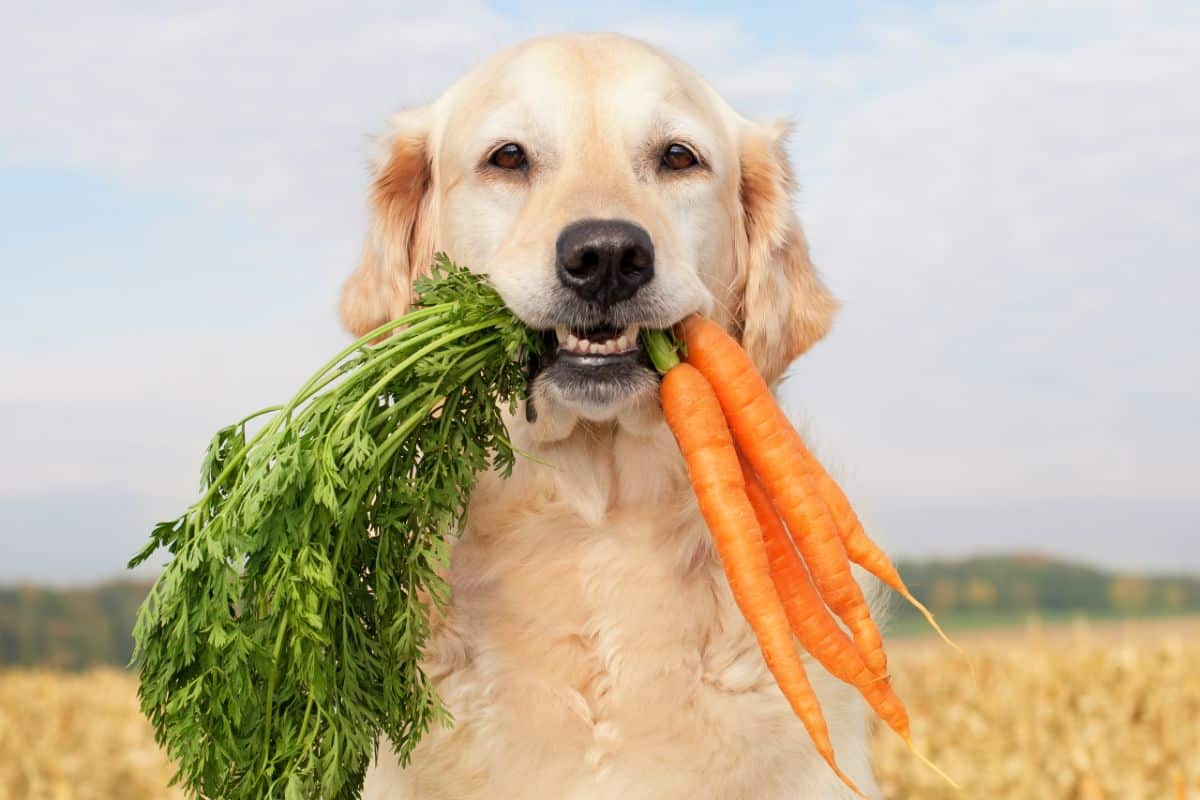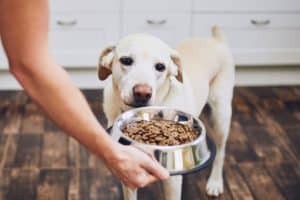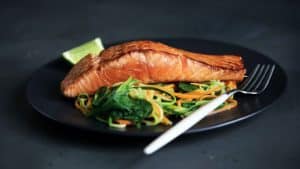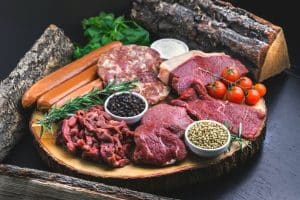Dogowners in the UK have gotten so used to feeding meat to their dogs that they often overlook the importance of vegetables.
However, vegetables are an important part of a dog’s diet, and many owners need to know the benefits of adding them to their dogs’ kibble.
Dogs can benefit from vegetables in their diet. Vegetables provide important nutrients, vitamins, and fibre that improve their health and well-being. However, it’s important to choose the right types of vegetables. Always consult with your veterinarian before making any changes to your dog’s diet.
Your dogs don’t need any fruit or veg to keep them alive and healthy, but it can be added to your dog’s food for extra health benefits.
It is basically what they say to all humans; you need to eat your vegetables because they will only benefit different aspects of your health. It is the exact same thing for your dogs.
You might also have a dog allergic to food like rice/grain. In this case, they will not be able to have any food with this in it, which cuts out the carbohydrates and minerals in their diet. Using vegetables will fill this gap in their diet.
Why do dogs need vegetables in their diet?
As omnivores, dogs require a balanced diet that includes a variety of nutrients to thrive. While many people associate meat with the most important aspect of a dog’s diet, incorporating vegetables into your dog’s diet can offer numerous health benefits.
A. Nutritional value of vegetable
Vegetables are a rich source of vitamins, minerals, fibre, and antioxidants that can help to support your dog’s health.
Nutrients such as vitamins A, C, and K, as well as potassium and magnesium, are commonly found in vegetables and can be essential for maintaining healthy skin and coat, strong bones, and optimal organ function.
B. Improved digestion and gut health
Vegetables are a great source of fibre, which can help to promote healthy digestion and prevent constipation. Additionally, fibre can act as a prebiotic, supporting the growth of healthy gut bacteria and promoting a healthy microbiome in your dog’s digestive system.
This can help to improve nutrient absorption, reduce inflammation, and support overall health.
C. Reduced risk of chronic diseases
Many vegetables contain antioxidants, which can help to neutralise free radicals and prevent cell damage. This can help to prevent the development of chronic diseases and promote longevity.
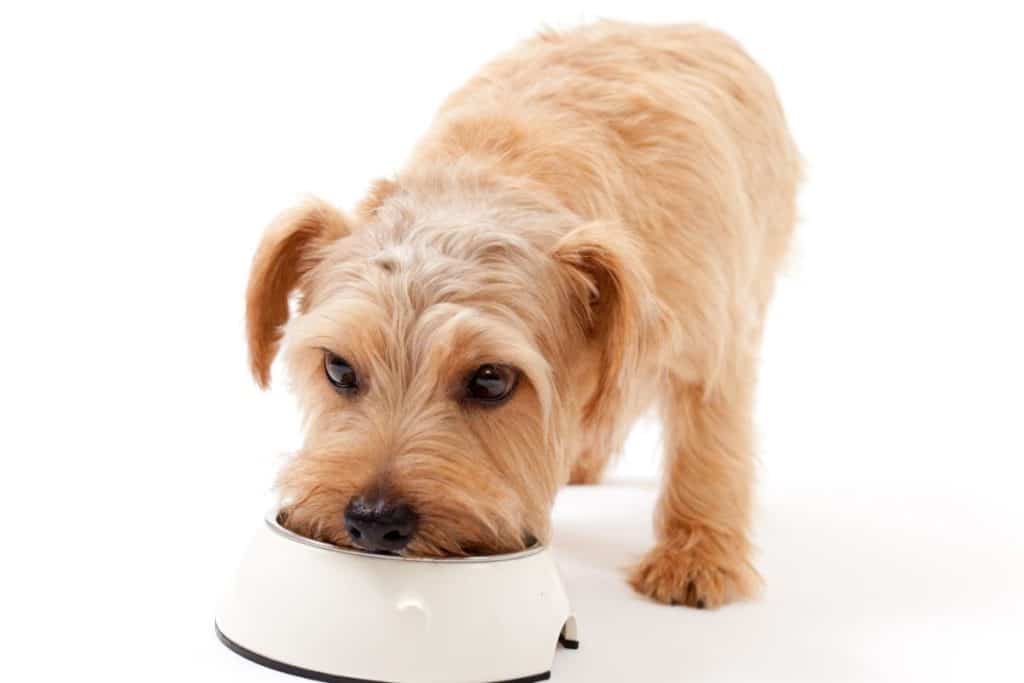
D. Improved immune system function
Vegetables contain vitamins and minerals that can help to support a healthy immune system.
Vitamin C, for example, can help to boost the immune system’s response to infections, while zinc can help to regulate immune cell function.
Read More: Discover the Benefits (& Cons) of Raw Food for Your Dog’s Health
E. Better, weight management
Vegetables, are low in calories but high in fibre, which can help to promote a feeling of fullness and prevent overeating. Additionally, a diet high in vegetables can help regulate blood sugar levels, reducing the risk of insulin resistance and obesity.
NOTE: I know it all sounds hunky-dory, but not all vegetables are safe for dogs. Some vegetables are good for them, while others are downright toxic. Don’t worry, I’ll tell you which one is next.
What vegetables do dogs need in their diet?
A. Leafy Greens
Kale, spinach, and collard greens are excellent sources of vitamins and minerals, including vitamins A, C, and K, as well as iron, calcium, and fibre. These vegetables are also low in calories, making them a great addition to your dog’s diet if they are overweight or need to maintain a healthy weight.
Most people avoid cabbage because it’ll make their dog smell a bit after, but it is extremely good for their skin and digestive system. If your dog struggles with digestion, then this could be your answer.
B. Root Vegetables
Root vegetables such as sweet potatoes, carrots, and beets are rich in antioxidants and fibre and provide a great energy source for dogs.
Sweet potatoes, in particular, are a great source of vitamins A and C, while carrots are an excellent source of beta-carotene converted to vitamin A in the body. Beets are also a great source of folate and potassium, which support healthy blood flow and heart function.
Dogs also need lots of carbohydrates, so potatoes are good for them when cooked. It’s also very high in potassium, which adds to the benefits.
Additionally, carrots are a nice, low-calorie snack for your dog and don’t have to be in the meals. Many dogs will love gnawing on the carrots like a bone.
C. Cruciferous Vegetables
Cruciferous vegetables such as broccoli, cauliflower, and Brussels sprouts contain vitamins and minerals, including vitamins C and K, folate, and potassium.
They also contain compounds called glucosinolates, which have been shown to have anti-cancer properties. These vegetables are best served cooked, as raw cruciferous vegetables can be difficult for dogs to digest.
D. Squash and Pumpkins
Squash and pumpkins are great sources of vitamins A and C, fibre, and potassium. They are also low in calories, making them a great addition to your dog’s diet if they need to lose or maintain a healthy weight. Squash and pumpkin can be served cooked or raw, but be sure to remove the seeds and skin, as they can be difficult for dogs to digest.
E. Fruits and Berries
Many fruits and berries are safe and healthy for dogs in moderation. Apples, bananas, blueberries, and strawberries are all great sources of vitamins and antioxidants. However, some fruits, such as grapes and raisins, can be toxic to dogs, so avoid these.
Safety Tip: It’s pertinent to consider that while these vegetables are safe and healthy for most dogs, some may have specific dietary needs or health conditions requiring a different diet. It’s always best to consult your veterinarian before significantly changing your dog’s diet.
What vegetables should I avoid giving my dog?
1. Onions and Garlic: These vegetables contain compounds that can damage a dog’s red blood cells, leading to anaemia. Even small amounts can be dangerous.
2. Mushrooms: Some can be toxic to dogs and cause vomiting, diarrhoea, and liver damage.
3. Rhubarb: The leaves of the rhubarb plant contain oxalates, which can cause kidney damage in dogs.
4. Tomato Plants: The leaves, stems, and unripe fruit of tomato plants contain solanine, which can be toxic to dogs.
5. Avocado: While the flesh of an avocado is not toxic to dogs, the pit and skin contain persin, which can cause vomiting and diarrhoea.
6. Raw Potatoes: Raw potatoes contain solanine, a toxic compound that can cause digestive issues and even death in extreme cases.
7. Corn on the Cob: Dogs may be tempted to chew on corn cobs, but they can cause intestinal blockages and require surgery to remove them.

It’s important to note that this is not an exhaustive list and that some dogs may be more sensitive to certain vegetables than others. If you need clarification on whether a particular vegetable is safe for your dog, it’s best to consult with your veterinarian.
How to add vegetables to your dog’s diet?
Here are some tips on how to add vegetables to your dog’s diet.
A. Cooked vs Raw Vegetables
While some dogs can handle raw vegetables, others may have difficulty digesting them. Cooked vegetables are generally easier to digest and can help your dog absorb more nutrients.
B. Appropriate Serving Sizes
The number of vegetables your dog needs depends on size and activity level. Vegetables should make up about 10% of your dog’s diet. This can be split into several smaller servings throughout the day or added to meals as a topper.
Read More: Best Dog Food For Flatulence in UK 2023
C. Incorporating Vegetables into Meals
You can chop them up and mix them in with kibble or mix them in with wet food. Another option is to use vegetables as a topper. This can be done by steaming or boiling vegetables and adding them to your dog’s food.
D. Avoiding Toxic Foods
While many vegetables are safe and healthy for dogs, some can be toxic.
Incorporating vegetables into your dog’s diet can provide various health benefits. Just be sure to do so safely and appropriately, and always consult with your veterinarian if you have any concerns.
Frequently Asked Questions (FAQs)
A. How many vegetables should I add to my dog’s meals?
The number of vegetables you add to your dog’s meals should depend on your dog’s size and nutritional needs. Generally, starting with small amounts and gradually increasing over time while monitoring your dog’s response is recommended.
B. Can dogs be vegetarian or vegan?
Dogs are omnivores, meaning they can eat meat and plants. However, it’s important to ensure that dogs on vegetarian or vegan diets receive adequate nutrition, including protein and essential amino acids.
C. What are some easy ways to add vegetables to my dog’s meals?
Some easy ways to add vegetables to your dog’s meals include steaming or boiling vegetables and mixing them with your dog’s regular food, adding pureed vegetables as a topper, or using vegetables as a healthy treat.
D. Can adding vegetables to my dog’s meals cause digestive problems?
Introducing new foods to your dog’s diet, including vegetables, can sometimes cause digestive upset. Introducing new foods gradually and monitoring your dog’s response is important. Additionally, some vegetables can cause gas in dogs, so start with small amounts and avoid feeding too many at once.
